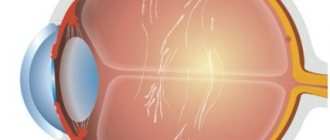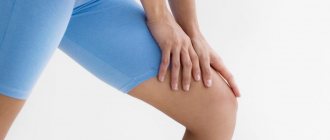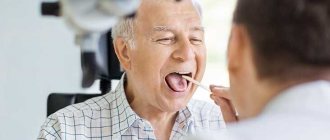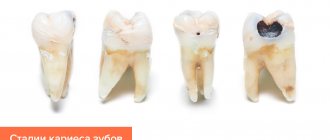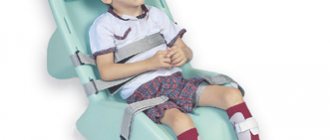The text is presented for informational purposes only. We strongly urge you not to self-medicate. When the first symptoms appear, consult a doctor. We recommend reading: “Why you can’t self-medicate?”
Steatorrhea is a condition in which at least 7 g of neutral fat is excreted in the stool. This happens due to impaired digestion and/or absorption of fats in the body. Steatorrhea occurs regardless of age and gender, and can be either an independent disease or a symptom of another pathology.
Creatorrhea and amilorrhea are often detected together with steatorrhea.
Medical products (drugs, medicines, vitamins, dietary supplements) are mentioned for informational purposes only. We strongly do not recommend using them without a doctor's prescription. We recommend reading: “Why can’t you take medications without a doctor’s prescription?”
Classification
According to the development mechanism
- Pancreatic. Pancreatic cells produce pancreatic lipase, the main enzyme that breaks down fats. With pathology of the gland, the production of lipase decreases, and neutral fat supplied with food begins to be excreted in the feces. This type of steatorrhea is considered the most common, so it has a separate code in the International Classification of Diseases.
- Cholecystohepatic. A decrease in the production of bile by liver cells, a change in its composition, and difficulty in entering the duodenum leads to a deterioration in the absorption of fats and the development of steatorrhea.
- Intestinal (enterogenous). With the help of bile and pancreatic lipase, fats are broken down into glycerol and fatty acids, which are absorbed into the blood through the villi of the small intestine. With intestinal pathology, this process is disrupted.
- Nutritional. Steatorrhea occurs due to excessive consumption of fatty foods, when the intake of fat exceeds the functionality of the pancreas.
By origin
- primary – steatorrhea is an independent disease and develops as a result of congenital changes in the pancreas;
- secondary – occurs against the background of another pathology.
Laboratory types of steatorrhea
- type I – predominantly neutral fat is detected in the stool;
- type II – fatty acids and soaps predominate in the stool;
- mixed - neutral fat, soap and fatty acids are present in different proportions.
Clinical manifestations of chronic pancreatitis
Manifestations of chronic pancreatitis depend on its form, stage, duration of development, complications encountered, and concomitant diseases.
The leading clinical symptom is pain. It occurs due to the development of increased pressure in the pancreatic ducts, or due to the development of pancreatitis-associated neuritis. The mechanisms of pain are described above, but it is worth noting that the spread of pain is associated with the involvement of the nerve plexuses, which are located between the lobules of the gland, in the inflammatory process, as well as pressure on them from the enlarged inflamed gland or pseudocysts.
Most often, at the beginning of the disease, the only complaint is pain above the navel
, it may bother you for several years. The pain is of a girdling nature, it can be debilitating, constant, or it can be paroxysmal and recurring. It can radiate to the back, to the left shoulder blade and shoulder, to the left side of the chest, and less often to the right. However, cases of pain radiating to the iliac and groin region, as well as to the genitals, have been described. The connection with food is of particular importance - pain appears after every meal, especially sour, spicy, salty, as well as those that stimulate bile secretion, for example, yolk, fat. Patients do not tolerate alcohol well.
Much later, digestion is disrupted: various dyspeptic disorders, steatorrhea, pancreatogenic diarrhea, insufficiency of intestinal absorption, malabsorption syndrome appear, which occurs due to insufficient production of enzymes in the pancreas. A person loses weight, becomes weaker, and calcifications appear in the pancreas. Little insulin is produced, which leads to secondary diabetes mellitus.
Causes
- congenital and acquired diseases of the pancreas: chronic pancreatitis, tumors and cysts, cystic fibrosis;
- diseases of the liver and biliary tract: cholelithiasis, chronic cholecystitis, gallbladder dysfunction, chronic hepatitis, cirrhosis of the liver, tumors of the liver and bile ducts;
- intestinal diseases: chronic enteritis, colitis, tumors;
- history of surgical treatment of the gastrointestinal tract: condition after cholecystectomy (removal of the gallbladder), resection of the intestine or stomach (removal of part of the organ);
- alcohol abuse – leads to the development of alcoholic hepatitis, pancreatitis, and then steatorrhea;
- previous infectious intestinal diseases: dysentery, salmonellosis;
- helminthic infestations, giardiasis;
- addiction to fatty foods;
- abuse of laxatives and weight loss drugs;
- heredity - a genetically determined defect in pancreatic lipase, a predisposition to autoimmune diseases.
Symptoms
Signs of the disease develop gradually. At first, the state of health worsens after errors in the diet (eating fatty foods), then the complaints become constant.
- Change in stool character. The feces acquire a grayish tint and shine, and a whitish film-like coating appears on the surface. Their consistency becomes ointment-like or mushy, with lumps of undigested food. A typical sign is hard-to-wash marks on the walls of the toilet.
- Frequency of bowel movements up to 3-6 times a day.
- Stitching or cramping pain in the abdomen of uncertain localization.
- Bloating and rumbling in the stomach are signs of increased gas formation and an increase in the amount of intestinal contents.
- Loss of body weight. When pancreatic function is impaired, the production of not only lipase, but also enzymes that break down carbohydrates and proteins, decreases. The body does not receive vital substances, so a person loses weight, children experience growth retardation
- Signs of deficiency of microelements and fat-soluble vitamins. Lack of vitamin K leads to increased bleeding, vitamin E to muscle weakness, vitamin A to vision impairment, vitamin D to the development of rickets in children and osteoporosis in adults. Impaired iron absorption leads to anemia.
Symptoms of the disease
The first symptom of the progression of the disease is a frequent urge to defecate. During this process, oily stool is released, which is quite difficult to wash off the surface of the toilet bowl. It leaves behind a greasy, shiny trail. The stool has a gray or light shade, but its color may not change at all.
The main symptoms that indicate the development of a pathological process:
- dry cough;
- the urge to defecate becomes more frequent;
- dizziness;
- the patient notes the appearance of pain in the spinal column, as well as in the joints;
- the upper part of the abdomen is swollen and rumbling is periodically noted;
- weakness;
- decreased performance;
- mucous membranes become dry. This is especially true for the mucous membranes of the nose and mouth.
If the above symptoms are present, the human body gradually becomes depleted. Multimorphic erythema begins to appear on the skin. There are cracks in the corners of the mouth, and in the cavity itself there are clearly visible signs of the development of stomatitis. The gums become loose and bleed.
Diagnostics
Diagnosis and treatment of steatorrhea is carried out by a gastroenterologist.
- Anamnesis collection. The doctor clarifies the complaints, the conditions under which they appear, and determines the duration of the disease.
- Inspection. The doctor assesses the body mass index, pays attention to the nature of the skin and visible mucous membranes, then palpates the abdomen, detects pain and fluid transfusion.
- General blood analysis. Anemia is possible, in severe cases leukocytosis and increased ESR.
- Blood chemistry. A change in certain indicators indicates an underlying disease. An increase in the level of ALT and AST indicates liver pathology, an increase in the level of direct bilirubin indicates a violation of the outflow of bile. With severe pathology of the pancreas, blood glucose levels may increase.
- Coprogram. Microscopic examination of stool reveals drops of neutral fat, soap and fatty acids, undigested muscle fibers and starch grains.
- Quantitative determination of fat in three-day feces. The patient eats at least 100 g of fat every day for three days and collects feces in a separate container. Detection of more than 15 g of fat indicates steatorrhea. The method is difficult to implement, so it is used quite rarely.
- Acid steatocrit method. A stool sample is centrifuged, followed by determination of the lipid component.
- Study of pancreatic juice. Using a probe, pancreatic secretion is obtained from the duodenum and the amount of main enzymes in it is determined.
- Radioisotope methods. The patient is injected with labeled isotopes and their content in the blood, feces, and urine is determined at fixed intervals. Using radioisotopes, the type of steatorrhea is determined.
- Ultrasound of the abdominal organs. The method allows you to evaluate the size and structure of the pancreas, gall bladder, and liver.
- CT scan. Compared to ultrasound, this is a more sensitive method that helps clarify the nature of changes in internal organs.
- ERCP. A method for examining the condition of the bile ducts and pancreatic duct using an endoscope and a radiopaque agent.
Treatment
A necessary condition for the treatment of steatorrhea is diet.
Diet
Basic principles of dietary nutrition
- Fractional meals - that is, in small portions, up to 5-6 times a day.
- In case of moderately severe steatorrhea and the absence of complications, it is necessary to strive for a balanced diet, and correct enzyme deficiency with medications. In severe cases, the amount of fat in the daily diet is reduced to 60-80 g, and the calorie content is increased due to carbohydrates and proteins.
- The preferred methods of cooking are steaming and baking in the oven.
- Food should be at a comfortable temperature. It is necessary to avoid too cold and hot.
- Avoid smoking and alcohol.
List of recommended and prohibited foods and dishes
| Allowed | Forbidden |
|
|
Based on this list, each patient empirically selects the optimal diet for himself.
Drug treatment
- Enzyme replacement therapy. Prescribed drugs containing pancreatic lipase. The choice of medication and its dosage depends on the severity of steatorrhea. For severe forms of the disease, the drugs of choice are Creon and Pancitrate; for mild alimentary steatorrhea, Mezim Forte is used. Patients must take enzymes for life.
- Drugs that reduce gas formation in the intestines - Espumisan, Sab Simplex, Dimethicone, activated carbon.
- Intestinal antiseptics. To suppress pathogenic flora in the intestines, which predominates in patients with steatorrhea, Furazolidone and Enterofuril are prescribed.
- Probiotics. To restore the composition of the intestinal microflora, Lactobacterin, Bifidumbacterin, Linex, Enterol and others are used.
- Vitamins orally or intramuscularly.
- Iron supplements, folic acid for anemia.
Other
When cholelithiasis is detected, the gastroenterologist’s task is to promptly refer the patient for surgical treatment.
Prevention
In order not to treat steatorrhea, you should start preventing it as early as possible. To prevent the disease from progressing, the following recommendations must be put into practice:
- fractional meals;
- giving up cigarettes and alcohol;
- do not eat fried foods with a lot of spices;
- balanced diet.
What to do?
If you think you have steatorrhea
and symptoms characteristic of this disease, then a gastroenterologist can help you.
Source
Did you like the article? Share with friends on social networks:
Complications and prognosis
The development of complications of steatorrhea is possible with late seeking of medical help, non-compliance with doctor’s recommendations on dietary nutrition and drug therapy.
- cachexia – extreme degree of exhaustion;
- infectious complications - with this pathology, conditions are created for excessive growth of pathogenic microflora in the intestine with the subsequent development of abdominal abscesses and peritonitis.
The prognosis depends on the type of steatorrhea, the underlying disease, and the severity of metabolic disorders. In 80% of cases, it is possible to achieve a significant improvement in the quality of life of patients.


